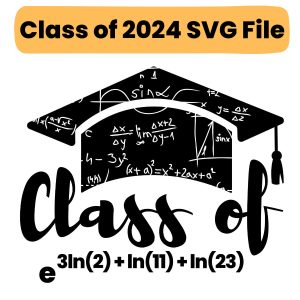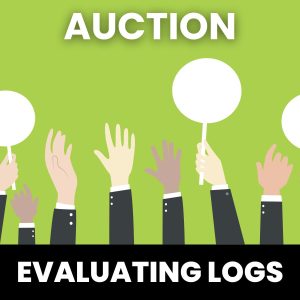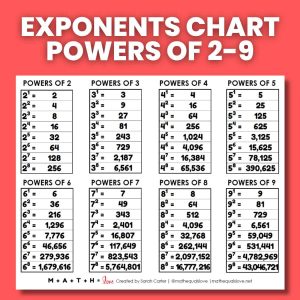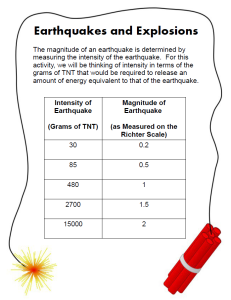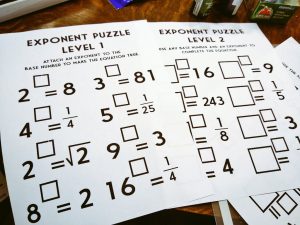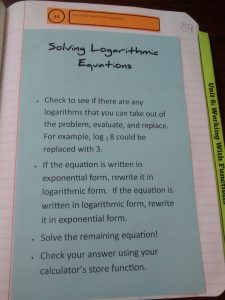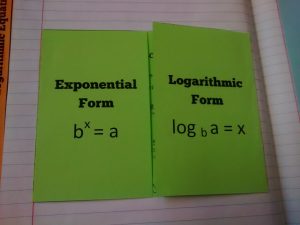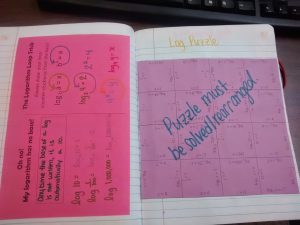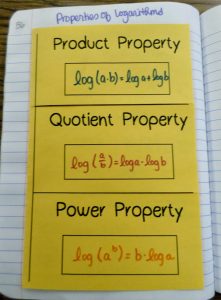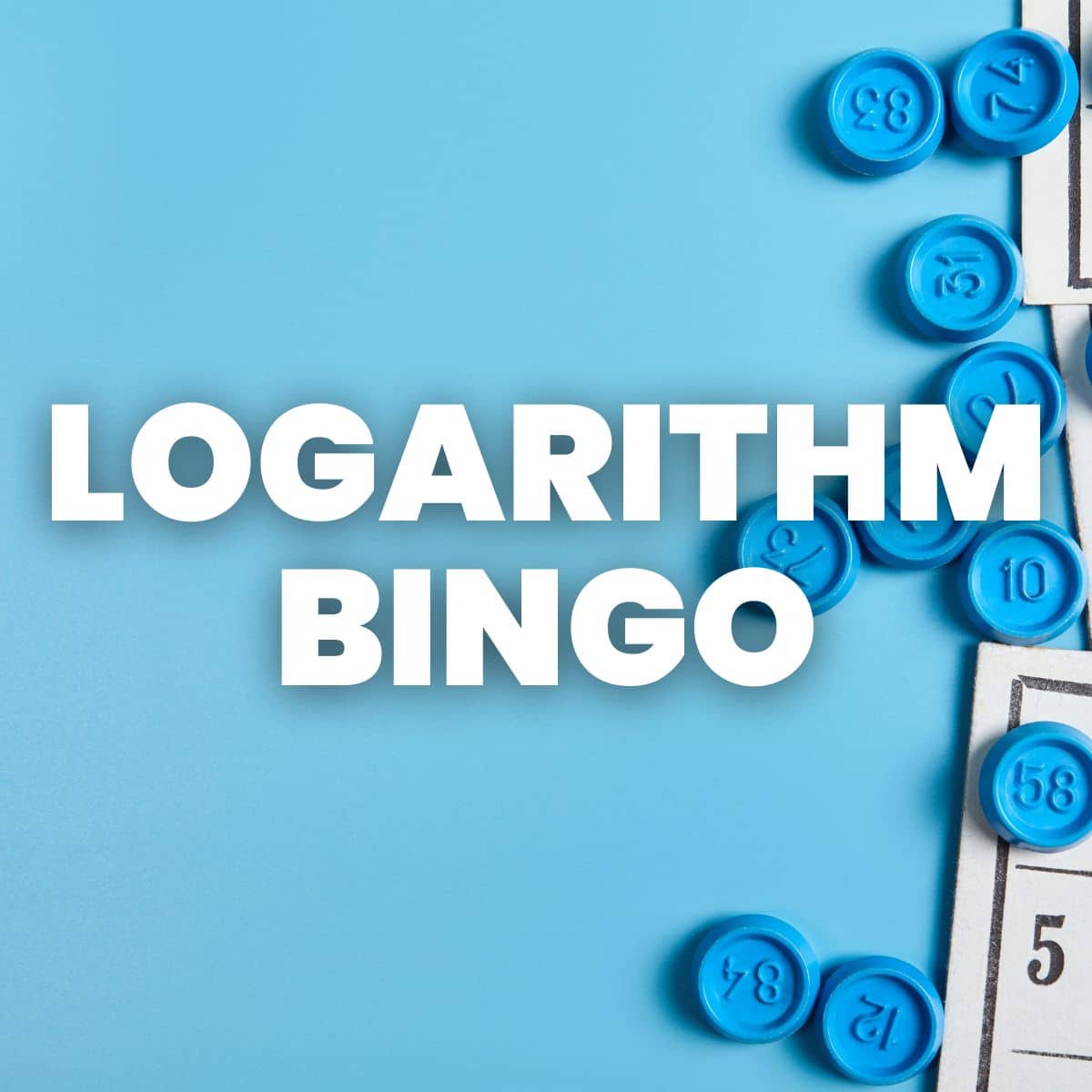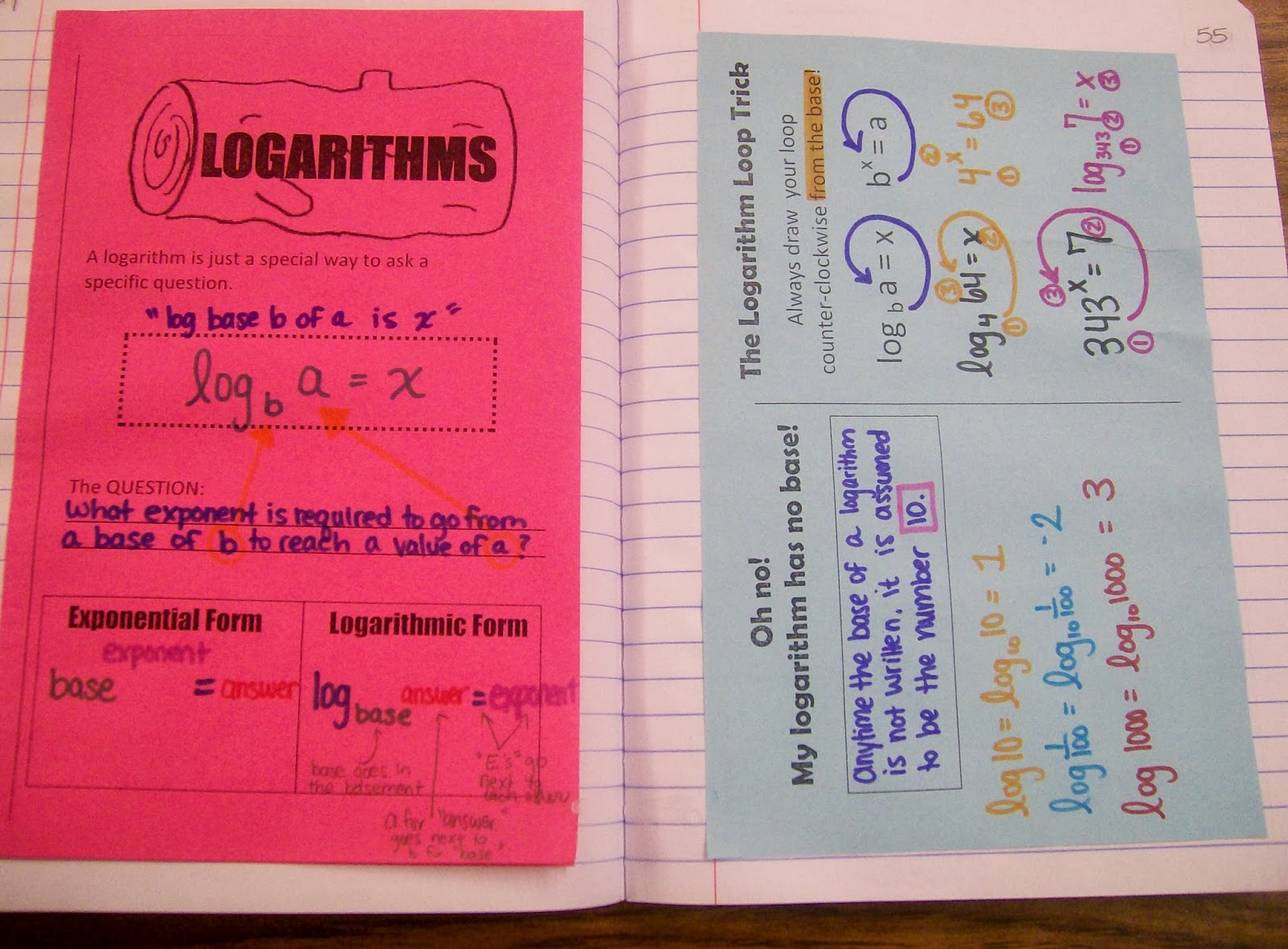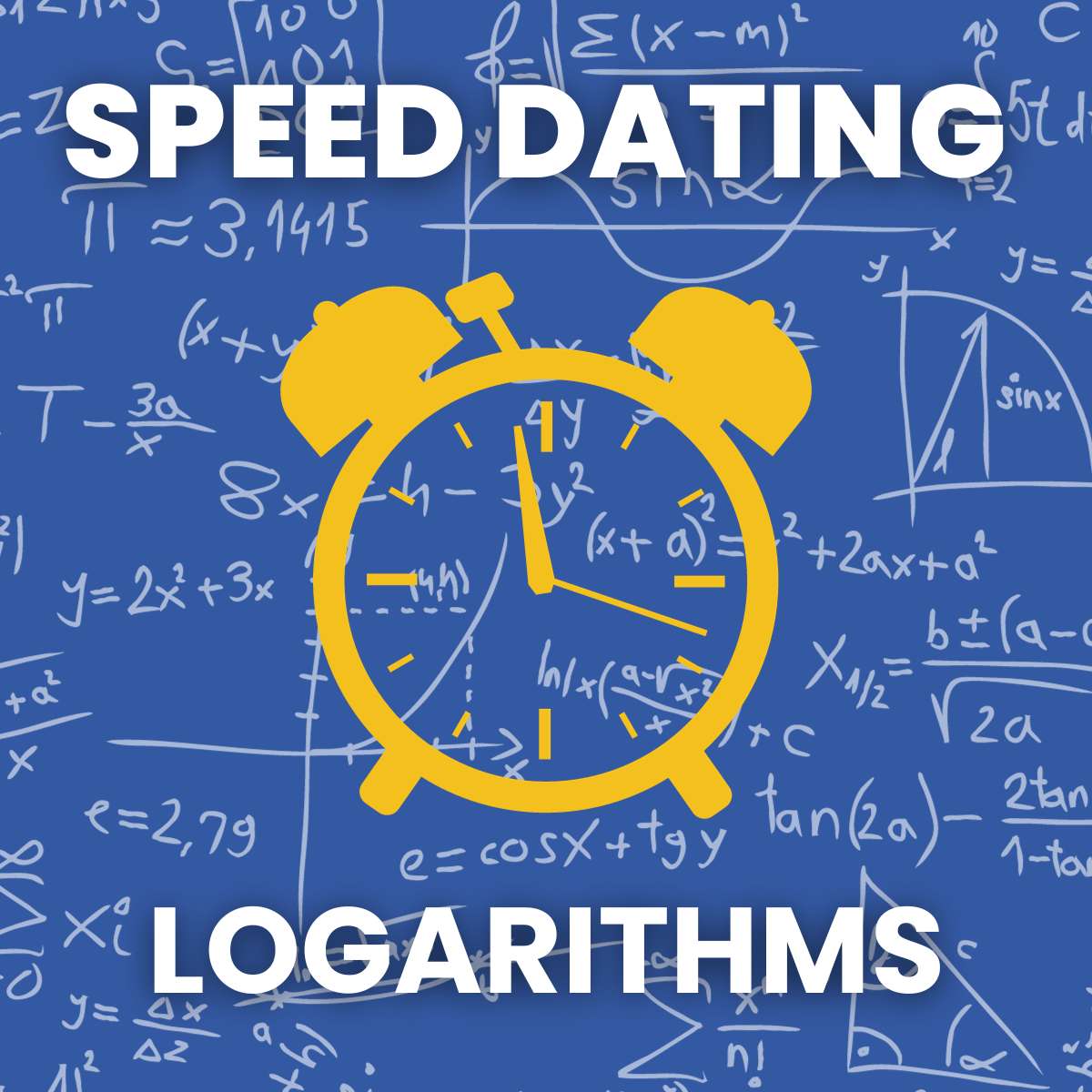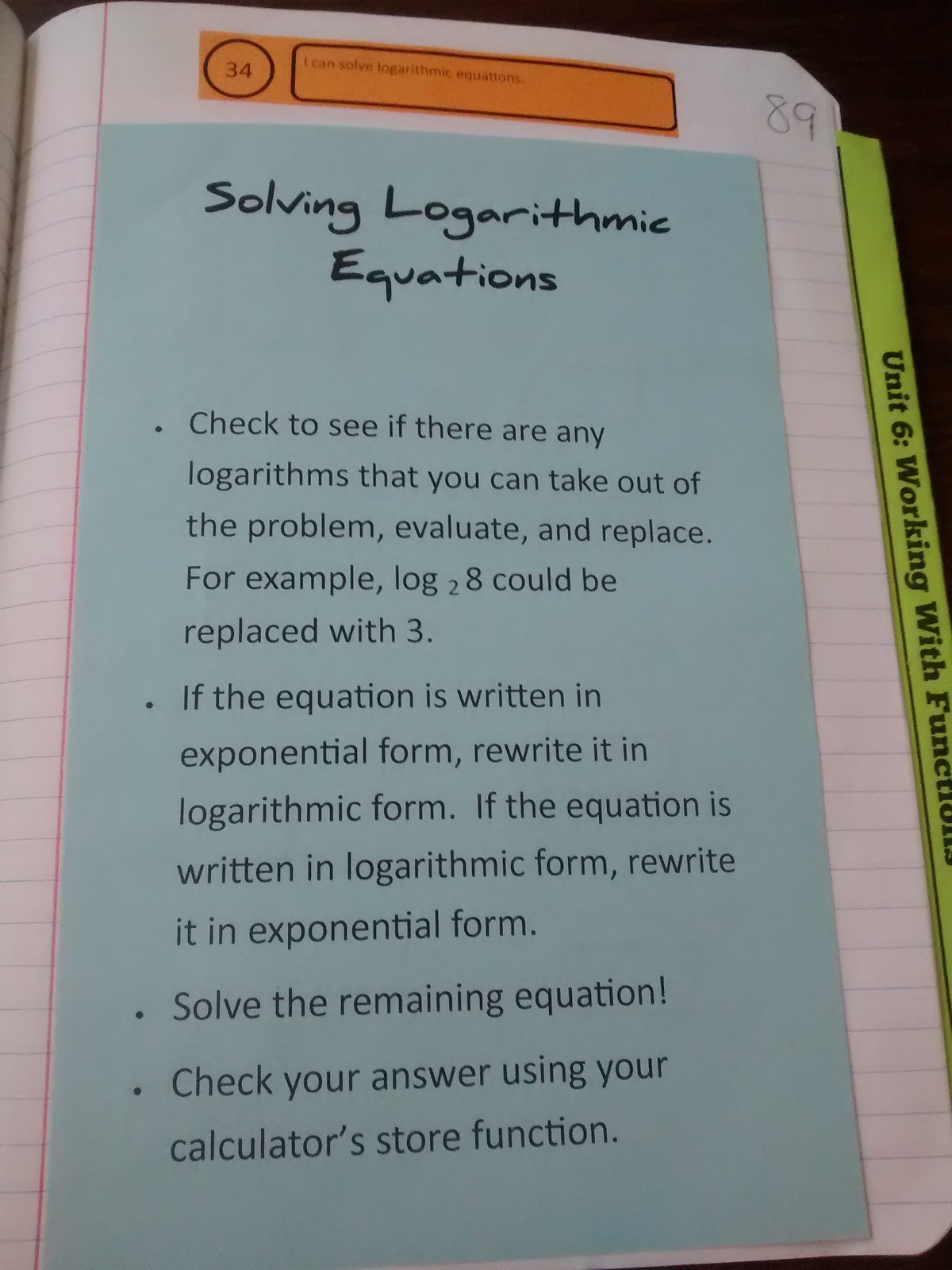Evaluating Logarithms Auction Activity
Looking for a free and fun evaluating logarithms activity? In this engaging auction-style activity, students will work in teams to evaluate logs and bid on them to see who can earn the most points.
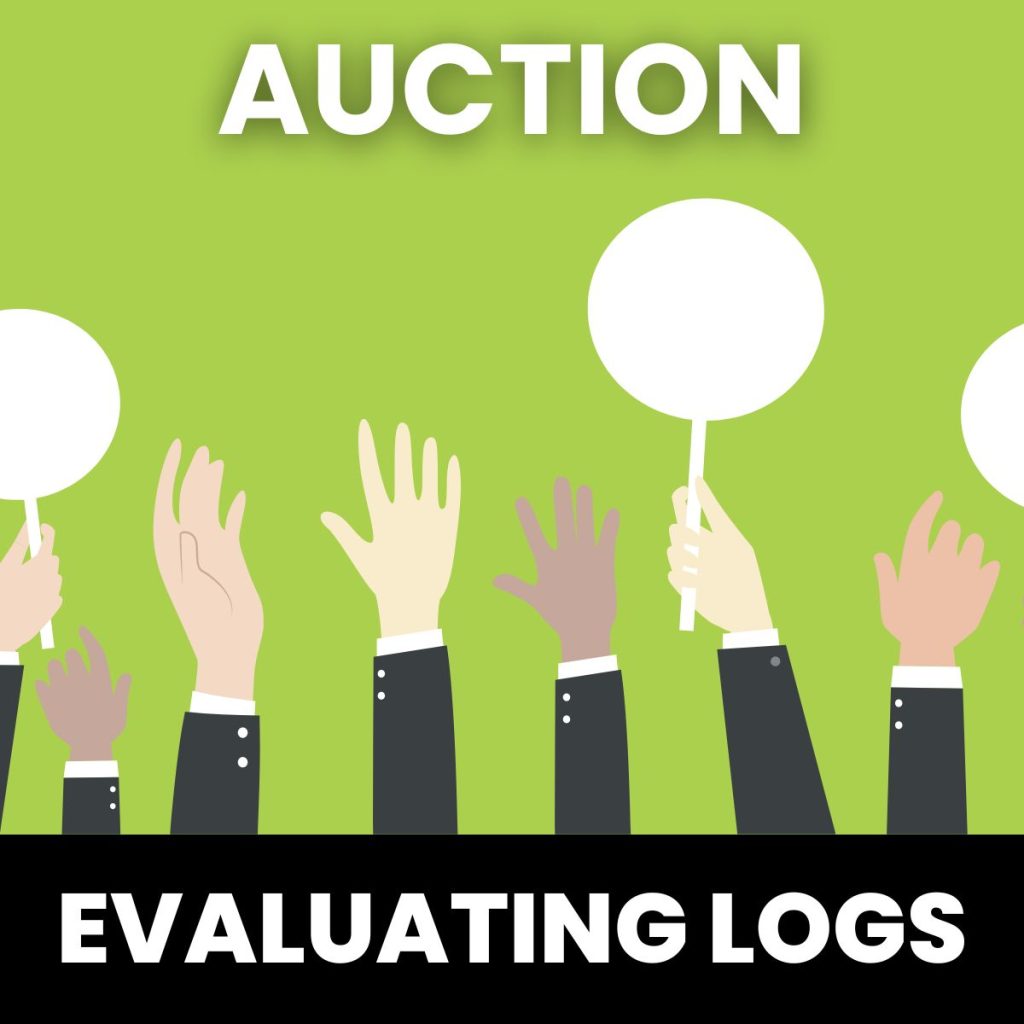
Topics Covered in Activity
This auction activity was designed to give students practice evaluating basic logarithmic expressions. It is expected that students have been exposed to both the common logarithm and the natural logarithm. Some of the logarithmic expressions require a knowledge of negative or fractional exponents in order to evaluate them without a calculator.
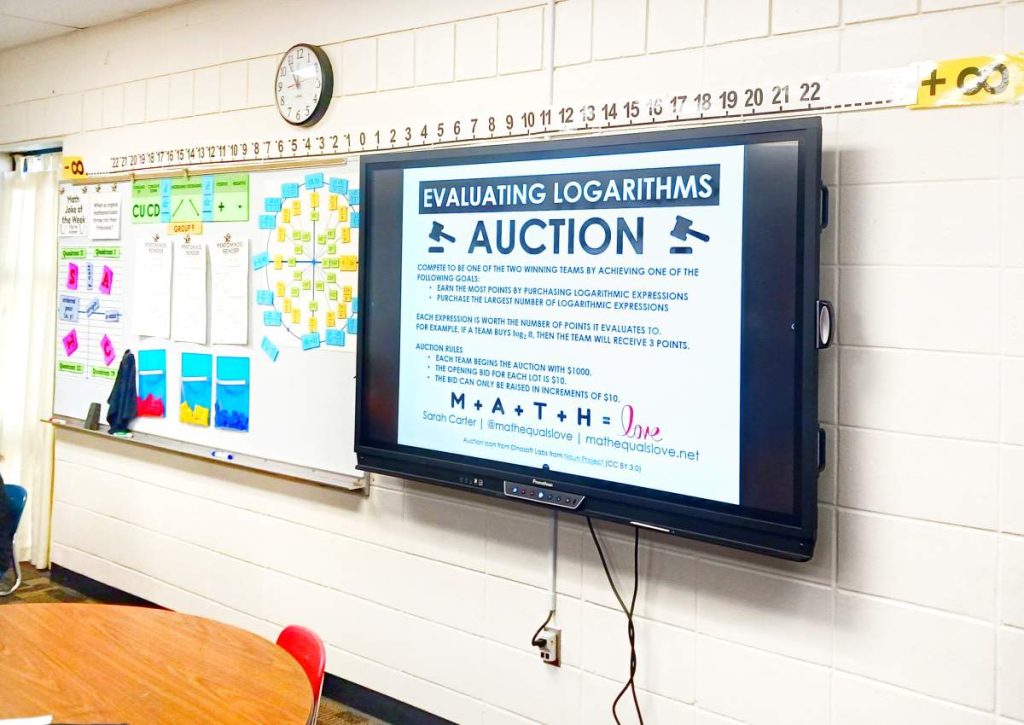
What course is this activity for?
I specifically designed this activity for an AP Precalculus class covering section 2.9 (Evaluate logarithmic expressions) as defined in the AP Precalculus Course and Exam Description. But it would be appropriate to use with any course that covers evaluating logarithms and includes natural logarithms.
I used to teach Algebra 2, and I could definitely see myself using this evaluating logs auction with my Algebra 2 classes if I ever return to teaching that class.
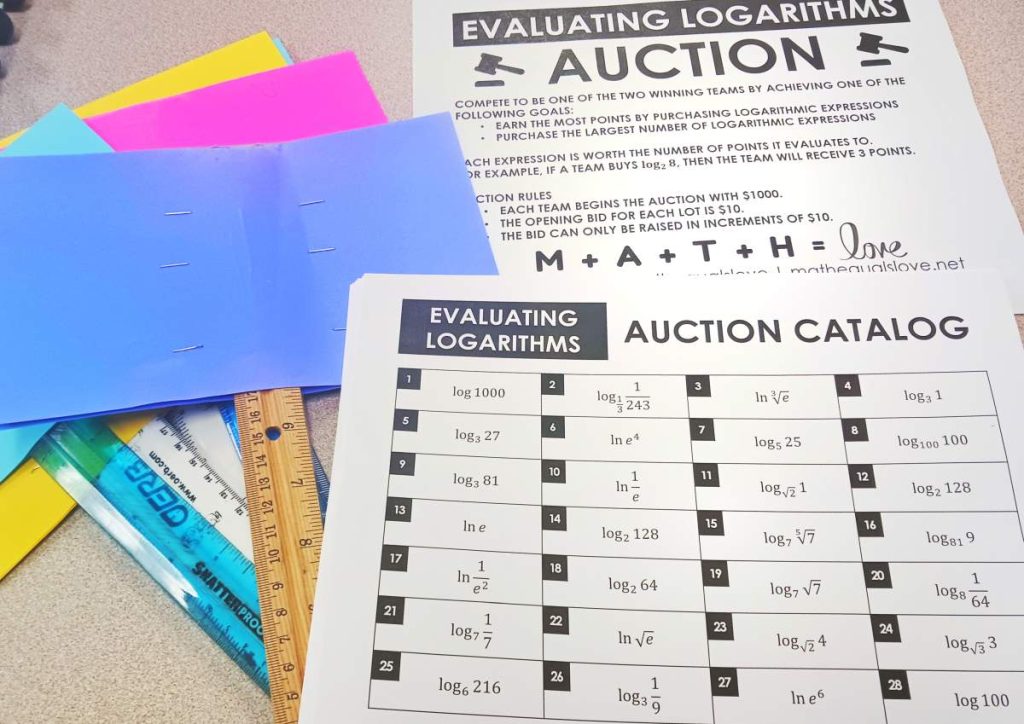
Activity Instructions
Team Sizes
Divide your students up into several groups. In my classroom, I have six large tables, so I used those six tables as my six groups for this activity. Ideally, you would have at least four groups for this activity.
If you are doing this with an especially small class of students, you could definitely have students competing individually as teams of 1 so that you had at least four groups. This isn’t the most ideal situation since one of the driving motivations behind this activity is to get students talking and discussing logarithms, but sometimes you just have to make compromises based on your unique teaching situation.
Starting Money
Each group starts the auction with $1000. In the past, I have used fake money for my function auction activity. I decided to forego the fake money and just keep track of how much money each group had on the dry erase board.
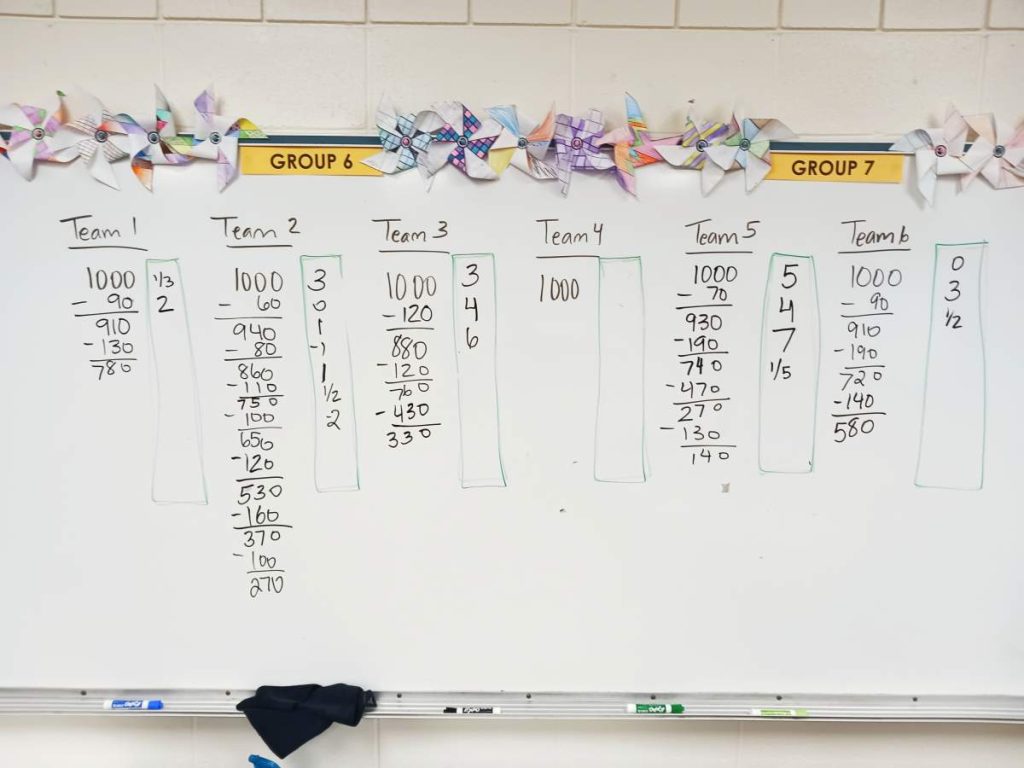
There were pros and cons to this approach. The main benefit was that it was a lot less hassle for me. 6 groups x $1000 in play money is a lot of fake cash to keep up with, pass out, etc. The main drawback was that each team knew exactly how much money the other teams had remaining. This did take a bit of fun out of the auction aspect.
Auction Rules
To make things run smoothly in my classroom, I instituted the following auction rules.
- The opening bid for each lot is $10. As the auction progresses, students often began opening the bid in higher increments of $10. I’m totally okay with the bid opening at $200. But $237? Nope!
- The bid can only be raised in increments of $10. Let’s keep the math simple.
- Each group has an auction paddle. (A piece of paper stapled around a ruler. I have seriously been using these same auction paddles since 2015 or 2016.) Only the person with the paddle is allowed to bid.
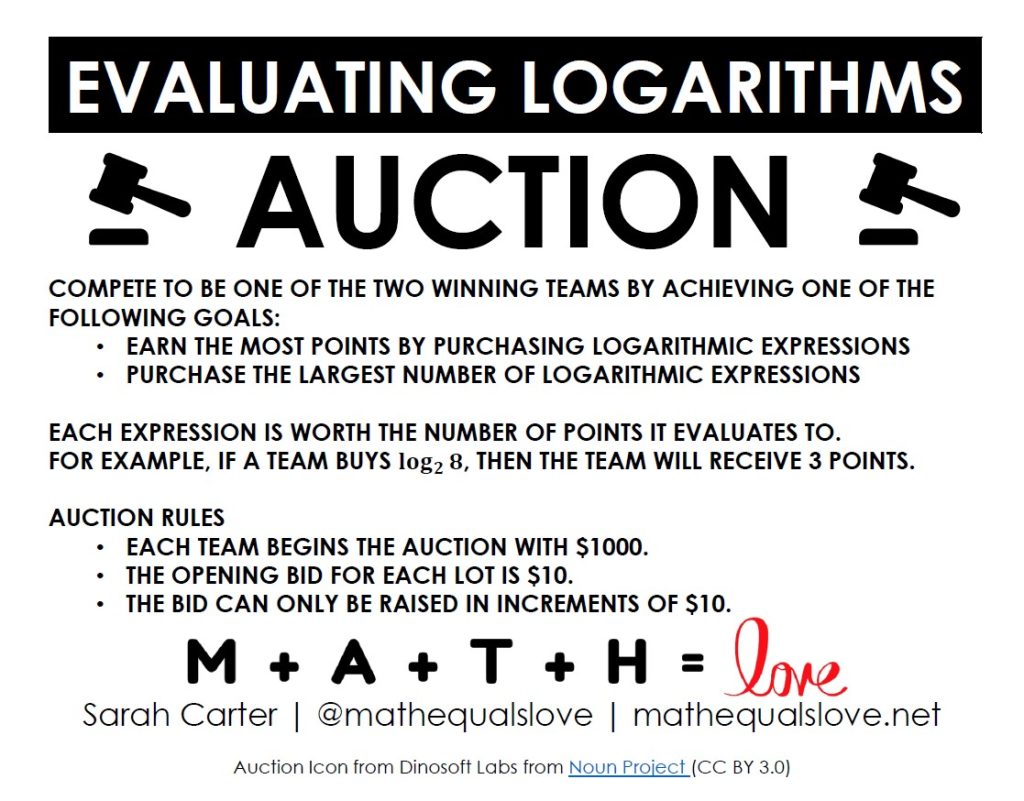
Winning the Auction
With my original function auction activity, the winning team was the team that purchased the most functions. This evaluating logarithms auction is slightly different in that everything being auctioned off is a logarithm.
Instead, I am trying to get students to practice evaluating logarithms without a calculator. So for this auction, each expression is worth a number of points equal to what the expression evaluates to. For example, if a team buys log 100, then the team will receive 2 points. The purchase of log 0.01 would result in the team receiving -2 points.
To make things a bit more interesting and prevent from having a bunch of unsold lots, I decided to switch things up and have two ways to win. (This is one of the reasons I suggest having 4 or more teams since there will be 2 winners.)
The first way to win the logarithm auction is to earn the most points by purchasing logarithmic expressions. I kept a running list of the points earned by each team next to their running total of money to spend on the dry erase board.
The alternative way to win the logarithm auction was to be the group that purchased the largest number of expressions. In this case, it didn’t matter what the logarithms evaluated to. If one group purchased six expressions, and the other groups purchased five or less, then the group with six expressions would be the winner.
One of the reasons I decided to add this second way to win was that it meant that every auction would be bid on. But a team might not necessarily know if the other teams were bidding on a lot because it was worth a large number of points or because they were simply trying to buy as many logs as possible.
Some of my students tried to be very sneaky in this regard!
Starting the Activity
After breaking the classroom into groups and going over the auction rules, I explained to my students that all good auctions issue an auction catalog for the participants to peruse before the auction begins.
I passed out the auction catalog. Each group got one copy of the catalog for each two-three students in the group. The writing on the catalog is quite small, so I wanted to make sure every student in the group could see the problems easily.
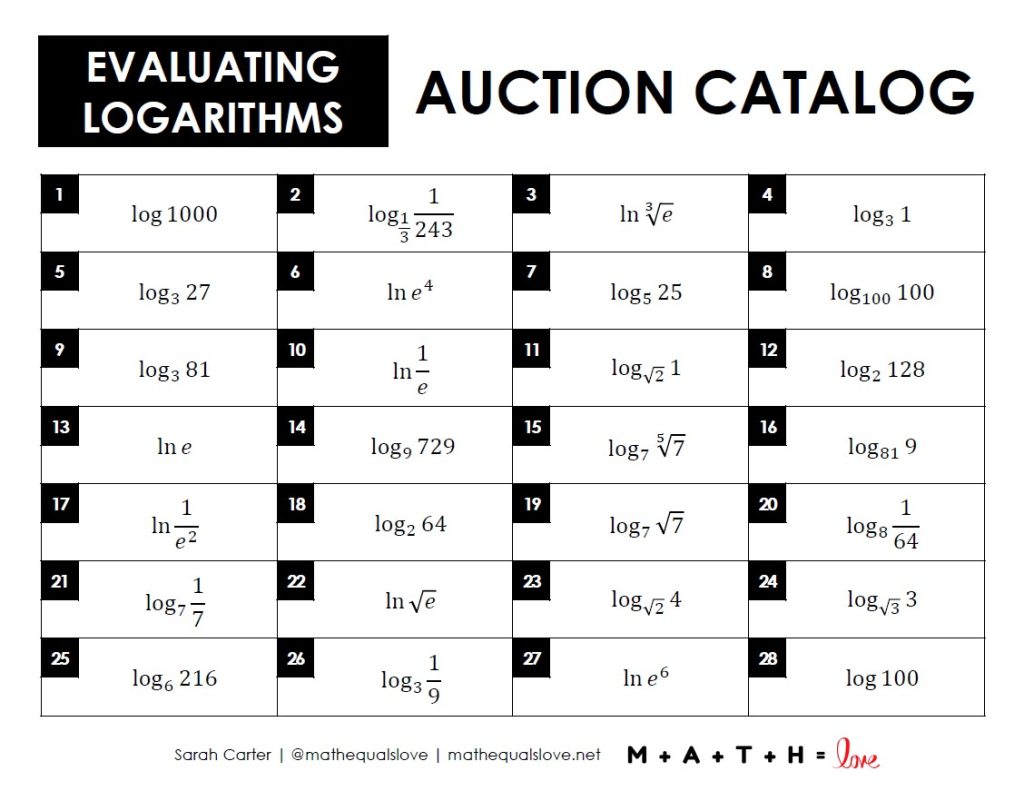
I set a timer for 3 or 4 minutes and gave each group time to evaluate as many of the logarithms as possible and formulate a plan for the upcoming auction.
For my AP Precalculus students who had previously seen logarithms in Algebra 2, 3 minutes was sufficient. For students learning to evaluate logarithms for the very first time, I think they might benefit from a longer amount of time with the auction catalog before the auction commences.
Warning: don’t give students too much time with the auction catalog. This auction is meant to be a learning experience. Students learn more about evaluating logarithms as each lot is auctioned off and the problem is discussed and points are awarded.
Running the Auction
A PowerPoint file is included at the bottom of this post to help you run the actual auction. Put the slide for the next lot on the screen. Ask for an opening bid.
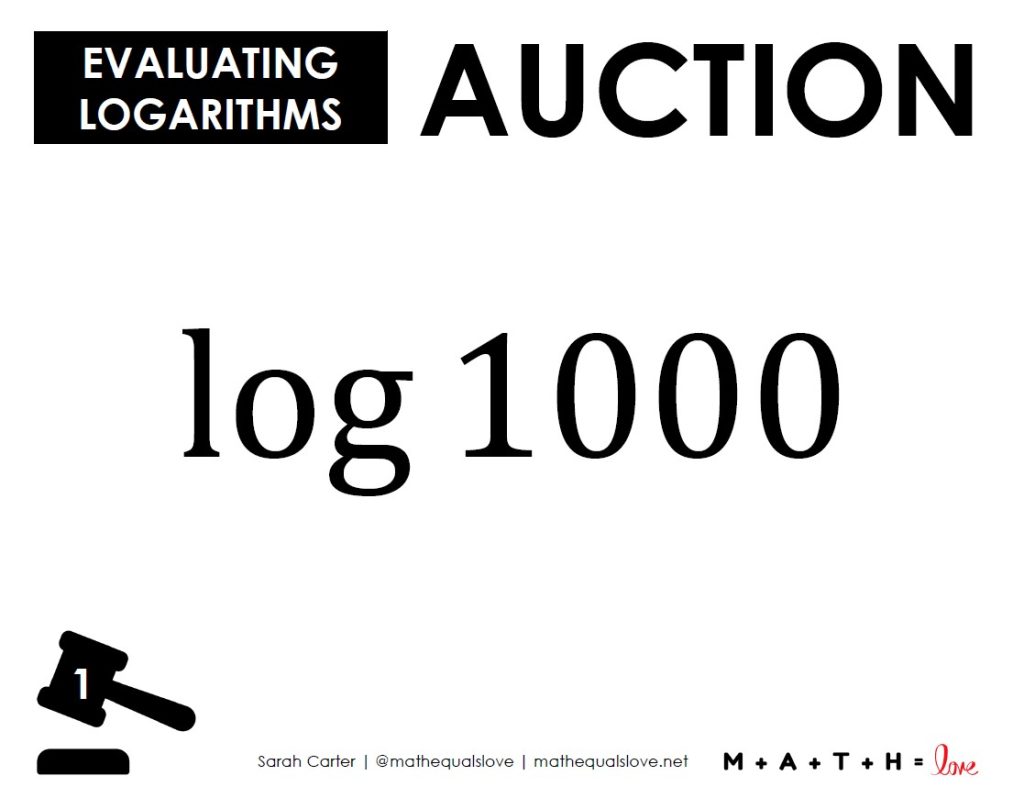
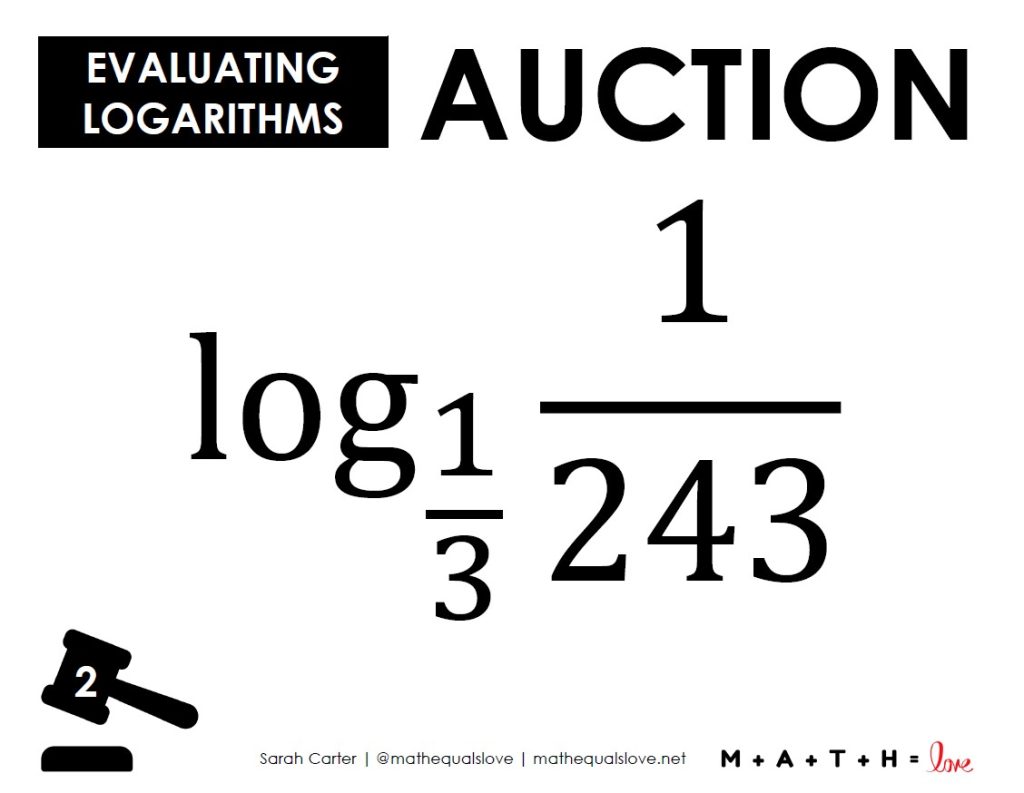
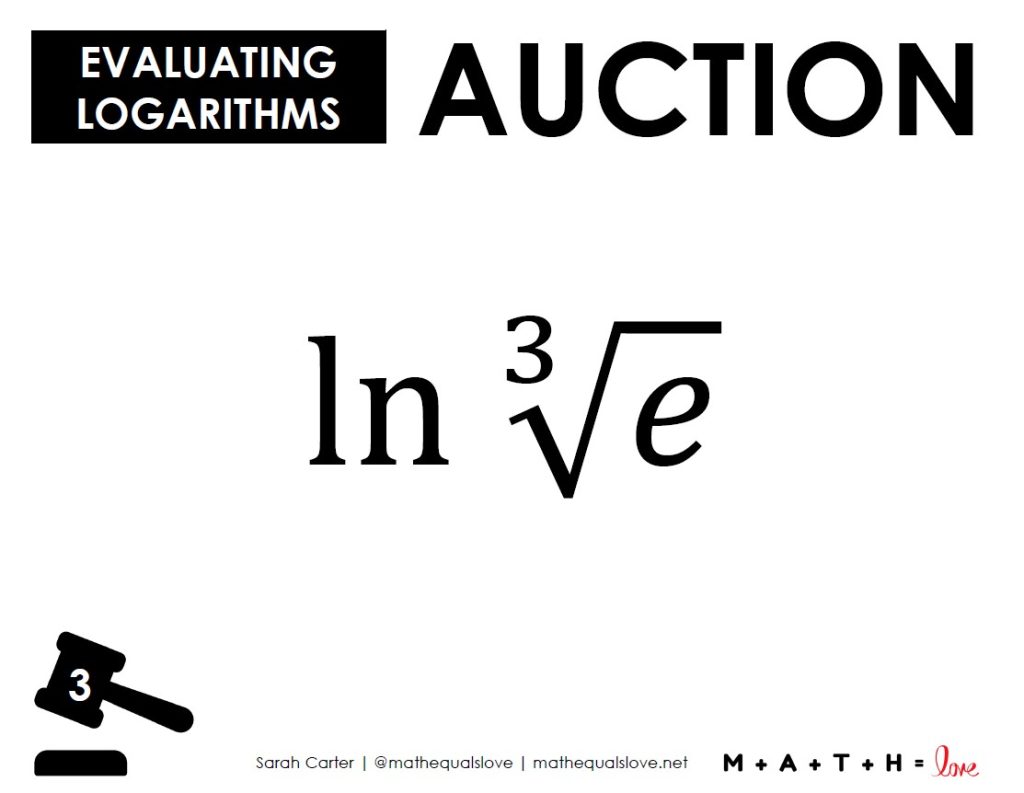
Look around the room and take additional bids. When the bidding slows, I like to say “Going once. Going twice. Sold!” While I wish I had an actual auctioneer’s voice, I sadly do not.
Deduct the amount spend from that team’s total. Then, ask the class how many points the group should be awarded based on what the logarithm evaluates to.
I like to spend a bit of time explaining the trickier log expressions. But if everyone in the room seems to know what the point value right away, I tend to just move on.
There are 28 different lots to get through, so keeping up a good pace is crucial. With one of my classes, we finished with plenty of time left over. With my other class, we had to end the game and determine the two winning teams with a large number of the lots left unsold because we ran out of time.
When you reach the end of the class period or all of the lots are auctioned off, determine the two winners: the team with the most points and the team with the most purchases.
In the case of a tie, choose the team with the most money remaining. So, if two teams both earned fifteen points, but one had $50 remaining and the other had $100 remaining, the winner would be the team with $100 remaining.
Modifying the Activity
Ultimately, you know your students best! Feel free to edit and modify the activity however you need to. An editable PowerPoint file is included to help make it easy to make this activity fit you and your classroom!
Free Download of Evaluating Logarithms Auction Activity
This activity is available to download as both a PDF file and an editable PPT file. To edit the PowerPoint file, you will need to have Microsoft PowerPoint installed on your computer.
Evaluating Logarithms Auction Activity (PDF) (333 downloads )
Evaluating Logarithms Auction Activity (Editable PPT File in ZIP Folder) (403 downloads )
More Activities for Teaching Logarithms
- Precalculus Graduation Stickers
- Evaluating Logarithms Auction Activity
- Swap Two – A Logarithms Task
- Exponents Chart (Powers of 2 to 9)
- Earthquakes and Explosions – a Logarithms Problem Based Assessment (PBA)
- Amy Gruen’s Exponent Puzzles
- Solving Logarithmic Equations Foldable
- Converting Between Exponential and Logarithmic Form Foldable
- Logarithm Tarsia Puzzle Activity
- The Case of the Cooling Corpse Task
- Change of Base Formula Notes
- Properties of Logarithms Foldable

